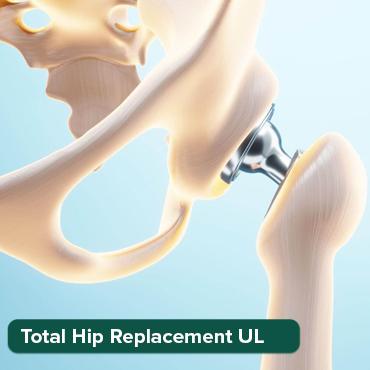
Advanced Robotic Technology Used in Eye Surgery
31 Oct, 2025
 Healthtrip
Healthtrip- Where is Robotic Eye Surgery Performed?
- Why Choose Robotic Eye Surgery? Benefits and Advantages
- Who is a Good Candidate for Robotic Eye Surgery?
- How Does Robotic Eye Surgery Work? A Step-by-Step Explanation
- Examples of Robotic Eye Surgery: Conditions Treated
- Hospitals Offering Advanced Robotic Eye Surgery
- Saudi German Hospital Alexandria, Egypt
- Breyer, Kaymak & Klabe Augenchirurgie
- Yanhee International Hospital
- Vejthani Hospital
- Memorial Bahçelievler Hospital
- Memorial Sisli Hospital
- NMC Specialty Hospital, Al Nahda, Dubai
- Thumbay Hospital
- Mount Elizabeth Hospital
- Singapore General Hospital
- Bangkok Hospital
- LIV Hospital, Istanbul
- Hisar Intercontinental Hospital
- Cleveland Clinic London
- Conclusion: The Future of Eye Care with Robotics
The Rise of Robotics in Ophthalmology
Precision and Control
Robotic systems offer unparalleled precision and control compared to traditional manual techniques. Think of it like comparing drawing freehand to using a finely tuned mechanical arm – the latter can execute movements with microscopic accuracy. In eye surgery, where even the slightest tremor can have significant consequences, this level of precision is a game-changer. For instance, during retinal surgery, a robot-assisted system can navigate delicate blood vessels and tissues with greater stability, minimizing the risk of damage. This enhanced control allows surgeons to perform complex maneuvers with confidence, potentially leading to improved surgical outcomes. Imagine a surgeon at Memorial Bahçelievler Hospital being able to remove scar tissue from your retina with pinpoint accuracy, thanks to robotic assistance. This reduces the likelihood of complications and speeds up your recovery, getting you back to enjoying clear vision sooner.
Most popular procedures in India
Minimally Invasive Procedures
One of the biggest advantages of robotic eye surgery is its potential to perform minimally invasive procedures. Smaller incisions translate to less trauma to the eye, reduced scarring, and faster healing times. Traditionally, some eye surgeries require relatively large incisions, which can lead to discomfort and a longer recovery period. With robotic assistance, surgeons can often access the eye through tiny incisions, minimizing disruption to surrounding tissues. This is particularly beneficial for procedures like corneal transplants, where a precise fit is crucial for optimal vision. Imagine waking up after surgery at Yanhee International Hospital and experiencing significantly less pain and discomfort than you anticipated. That's the power of minimally invasive robotic techniques. Healthtrip can help connect you with world-class facilities offering these advanced procedures.
Applications of Robotic Eye Surgery
Retinal Surgery
Robotic systems are making significant strides in the field of retinal surgery, offering new hope for patients with conditions like macular degeneration, diabetic retinopathy, and retinal detachment. These intricate procedures often require delicate maneuvers within the eye, and robotic assistance can enhance the surgeon's ability to perform them with precision. For example, robotic arms can be used to inject drugs directly into the retina, delivering targeted treatment with minimal side effects. They can also assist in the removal of scar tissue or the repair of retinal detachments, improving the chances of successful outcomes. Consider the possibility of undergoing a complex retinal surgery at Vejthani Hospital, knowing that the surgeon is utilizing advanced robotic technology to maximize precision and minimize the risk of complications. Healthtrip is here to guide you through the process and connect you with the right specialists.
Wellness Treatments
Give yourself the time to relax
Lowest Prices Guaranteed!

Lowest Prices Guaranteed!
Corneal Transplants
Corneal transplants are another area where robotic technology is showing great promise. Replacing a damaged or diseased cornea with a healthy one requires meticulous precision to ensure a proper fit and optimal vision. Robotic systems can assist surgeons in making precise incisions and aligning the new cornea with greater accuracy. This can lead to better visual outcomes and reduced risk of complications like astigmatism. Imagine undergoing a corneal transplant at Breyer, Kaymak & Klabe Augenchirurgie with the help of a robotic system that ensures perfect alignment and a faster recovery. Healthtrip understands the importance of finding the best possible care, and we're dedicated to connecting you with leading hospitals and surgeons around the world.
Glaucoma Surgery
While still in its early stages, the use of robotics in glaucoma surgery is also being explored. Glaucoma is a condition that damages the optic nerve, often due to increased pressure inside the eye. Surgical interventions aim to reduce this pressure and prevent further vision loss. Robotic systems could potentially assist in performing minimally invasive glaucoma surgeries, allowing for more precise placement of drainage devices and reducing the risk of complications. Imagine accessing innovative glaucoma treatments at Helios Klinikum Erfurt, where surgeons are exploring the potential of robotics to improve outcomes and preserve your vision. Healthtrip is committed to staying at the forefront of medical advancements and connecting you with the latest treatment options.
Where is Robotic Eye Surgery Performed?
Robotic eye surgery, a cutting-edge advancement in the field of ophthalmology, is gaining traction globally, offering enhanced precision and minimally invasive solutions for various eye conditions. While not yet as widespread as traditional eye surgeries, robotic eye surgery is available in select specialized centers and hospitals around the world. These facilities often boast state-of-the-art technology and teams of highly skilled surgeons trained in the nuances of robotic-assisted procedures. Finding the right place for such a delicate procedure is paramount, and Healthtrip aims to guide you towards making informed decisions. The adoption of robotic technology in eye surgery requires significant investment in infrastructure and specialized training, which explains its concentration in specific locations. As the technology advances and becomes more accessible, we anticipate seeing more medical centers offering these innovative treatments. Knowing where to find these services is the first step towards benefiting from the precision and potential advantages of robotic eye surgery.
Several hospitals stand out as pioneers in offering advanced robotic eye surgery. For instance, in Egypt, the Saudi German Hospital Alexandria demonstrates a commitment to integrating advanced medical technologies. In Germany, Breyer, Kaymak & Klabe Augenchirurgie is a leading center for ophthalmic care, potentially offering robotic-assisted procedures. Moving to Southeast Asia, Yanhee International Hospital and Vejthani Hospital in Thailand are known for their comprehensive medical services, which may include robotic eye surgery. In Turkey, Memorial Bahçelievler Hospital and Memorial Sisli Hospital are renowned for their advanced surgical capabilities. The NMC Specialty Hospital, Al Nahda, Dubai, along with Thumbay Hospital in the UAE, may also provide robotic eye surgery as part of their advanced treatment options. In Singapore, Mount Elizabeth Hospital and Singapore General Hospital are recognized for their sophisticated medical technologies and expertise. Finally, Bangkok Hospital in Thailand and LIV Hospital, Istanbul, along with Hisar Intercontinental Hospital in Turkey, represent further options for those seeking cutting-edge robotic eye surgery. While availability should be confirmed directly with each hospital, these institutions highlight the global reach of this innovative technology.
Why Choose Robotic Eye Surgery? Benefits and Advantages
Choosing robotic eye surgery may seem like a futuristic leap, but the benefits it offers are grounded in tangible improvements over traditional methods. Imagine a procedure where the surgeon's hand tremors are eliminated, allowing for movements measured in mere microns – that’s the level of precision robotic assistance brings to the operating room. But why does this matter for you, the patient? Precision translates directly into less trauma to delicate eye tissues, potentially leading to faster healing times and reduced risk of complications. Traditional eye surgery, while often successful, relies heavily on the surgeon's dexterity and can be limited by human factors. Robotic systems provide enhanced visualization, allowing surgeons to see the operative field in greater detail and from multiple angles. This clarity is essential when dealing with complex or hard-to-reach areas within the eye. Healthtrip understands that choosing a surgical path involves weighing the pros and cons, and we're here to illuminate the advantages of robotic eye surgery, helping you make a confident and informed decision about your eye health.
The advantages of robotic eye surgery extend beyond mere precision. Consider the minimally invasive nature of many robotic procedures. Smaller incisions mean less disruption to surrounding tissues, which can translate to less pain and scarring. Patients often experience a quicker return to their daily activities compared to traditional open surgeries. Another key benefit is the potential for improved outcomes. For example, in procedures like retinal detachment repair or glaucoma surgery, the enhanced control and visualization offered by robotic systems can lead to more accurate placement of sutures or implants, increasing the likelihood of successful long-term results. From a patient perspective, knowing that your surgeon has the support of advanced technology can bring peace of mind. While it's crucial to remember that the surgeon's skill remains paramount, robotic assistance can amplify their capabilities, offering a synergistic approach to eye surgery that promises better outcomes and a smoother recovery. It's about combining the best of human expertise with the unparalleled precision of robotic technology.
Who is a Good Candidate for Robotic Eye Surgery?
Determining whether you're a good candidate for robotic eye surgery is a crucial step, and it starts with a thorough evaluation by an experienced ophthalmologist. Don't think of it as a one-size-fits-all solution; instead, consider it a specialized tool best suited for specific situations. The ideal candidate often presents with conditions that demand a high degree of surgical precision, such as complex retinal detachments, intricate glaucoma procedures, or delicate corneal transplants. If your eye condition requires meticulous manipulation of tissues in hard-to-reach areas, robotic assistance might be particularly beneficial. However, being a good candidate isn't solely about the condition itself. Your overall health, medical history, and expectations also play significant roles. Factors like age, pre-existing medical conditions, and your ability to tolerate anesthesia will all be considered by your doctor. Healthtrip believes in empowering patients with knowledge, so understanding the criteria for candidacy is essential in your journey towards better eye health.
Despite the allure of advanced technology, robotic eye surgery isn't necessarily the right choice for everyone. For relatively straightforward eye conditions, traditional surgical methods may still be the most appropriate and cost-effective option. Conversely, individuals with certain anatomical limitations or severe systemic diseases may not be suitable candidates for robotic procedures. Remember, the decision should always be made in close consultation with your ophthalmologist, who can assess your individual circumstances and weigh the potential benefits and risks. It's also important to have realistic expectations. While robotic surgery can enhance precision and potentially improve outcomes, it's not a guaranteed cure. Success depends on various factors, including the severity of your condition, your body's healing response, and adherence to post-operative care instructions. By understanding these nuances and working closely with your medical team, you can make an informed decision about whether robotic eye surgery is the right path for you.
Also Read:
How Does Robotic Eye Surgery Work? A Step-by-Step Explanation
Robotic eye surgery, while seemingly futuristic, is grounded in sophisticated technology and meticulous execution. It's not about robots autonomously performing surgery; instead, it's about highly skilled surgeons using robotic systems to enhance their precision, control, and dexterity. Think of it as having a super-powered assistant who can translate your every move into incredibly refined actions within the delicate structures of the eye. The process typically begins with the surgeon sitting at a console, viewing a high-resolution, three-dimensional image of the eye. This provides an unparalleled level of detail, allowing them to see structures and tissues with remarkable clarity. Tiny instruments, attached to robotic arms, are then inserted into the eye through minuscule incisions, often smaller than a millimeter. These incisions are so small they often self-seal, minimizing the risk of complications and promoting faster healing. The surgeon then uses hand and foot controls to manipulate the robotic arms, translating their movements into precise actions within the eye. The robotic system filters out tremors and amplifies the surgeon's movements, allowing for incredibly delicate and accurate maneuvers. It's like performing surgery with the world's steadiest hands, ensuring the best possible outcome for the patient. This level of precision is particularly crucial when working near the retina, optic nerve, or other critical structures within the eye.
The robotic system also provides real-time feedback to the surgeon, including force and tactile sensations. This allows them to "feel" the tissues they are working on, providing an extra layer of safety and control. The surgery is often recorded, allowing for detailed analysis and quality control. It’s a complex dance between human expertise and robotic precision, all aimed at improving the patient's vision and quality of life. Imagine, for example, that you are repairing a tiny, intricate clock. You wouldn't use bulky tools; you’d want precision instruments and a steady hand. Robotic eye surgery offers that same level of finesse, allowing surgeons to tackle complex procedures with greater confidence and accuracy, leading to better results and a quicker recovery for the patient. It’s a testament to the power of technology to enhance human skill and improve healthcare outcomes.
Examples of Robotic Eye Surgery: Conditions Treated
Robotic eye surgery is making significant strides in treating a range of complex eye conditions, offering hope and improved outcomes for patients who might not have had such options a few years ago. One of the most promising applications is in the treatment of retinal diseases, such as retinal detachment and macular degeneration. In retinal detachment surgery, the robotic system can be used to precisely reattach the retina to the back of the eye, restoring vision and preventing further damage. For macular degeneration, particularly age-related macular degeneration (AMD), robotic surgery can be used to deliver targeted therapies directly to the affected area, slowing the progression of the disease and preserving vision. It is also becoming increasingly important in treating glaucoma. The robotic system can be used to create precise drainage channels in the eye, reducing intraocular pressure and preventing further damage to the optic nerve. This can be a game-changer for patients with glaucoma, helping them to maintain their vision and quality of life.
Diabetic retinopathy, a common complication of diabetes, can also benefit from robotic eye surgery. The robotic system can be used to precisely remove damaged blood vessels and scar tissue from the retina, improving vision and preventing further complications. Moreover, robotic assistance is proving invaluable in complex cataract surgeries. The precise movements facilitated by the robot ensure optimal placement of intraocular lenses, leading to improved vision correction and reduced risk of post-operative complications. Each of these applications leverages the robot’s ability to perform intricate tasks with unparalleled accuracy. This precision is particularly critical when dealing with the delicate structures of the eye, where even the slightest error can have significant consequences. Consider, for instance, the placement of a tiny stent to relieve pressure in glaucoma – the robotic system allows for placement with micron-level accuracy. The technology isn't just about being cutting-edge; it's about delivering tangible benefits to patients by minimizing risks and maximizing the potential for visual improvement.
Also Read:
Hospitals Offering Advanced Robotic Eye Surgery
As robotic eye surgery continues to evolve and demonstrate its potential, an increasing number of hospitals and medical centers around the world are adopting this advanced technology. These institutions are at the forefront of innovation, offering patients access to state-of-the-art treatments and experienced surgeons who are trained in robotic techniques. It is important to note that availability of robotic eye surgery can vary significantly depending on geographic location and the specific expertise of the medical facility. However, the growing interest in this field suggests that more centers will be offering these services in the future. For instance, in Egypt, the Saudi German Hospital Alexandria stands out as a potential option. In Germany, Breyer, Kaymak & Klabe Augenchirurgie is another center to consider.
In Thailand, both Yanhee International Hospital and Vejthani Hospital offer comprehensive eye care services, and it is worth inquiring whether they offer robotic eye surgery. In Turkey, Memorial Bahçelievler Hospital, Memorial Sisli Hospital, LIV Hospital, Istanbul and Hisar Intercontinental Hospital are known for their advanced medical technologies. In the United Arab Emirates, NMC Specialty Hospital, Al Nahda, Dubai and Thumbay Hospital can be considered while in Singapore, Mount Elizabeth Hospital and Singapore General Hospital are possible options. Bangkok Hospital in Thailand and Cleveland Clinic London in the UK are other institutions that could be offering robotic eye surgery. When considering a hospital for robotic eye surgery, it is crucial to inquire about the specific type of robotic system they use, the experience of the surgeons who will be performing the procedure, and the outcomes they have achieved with similar cases. It is also important to discuss your individual needs and expectations with the medical team to ensure that robotic surgery is the right option for you.
Conclusion: The Future of Eye Care with Robotics
Robotic eye surgery represents a significant leap forward in ophthalmic care, offering the potential for greater precision, improved outcomes, and faster recovery times for patients with a range of eye conditions. While it is still a relatively new field, the rapid pace of technological innovation suggests that robotic surgery will play an increasingly important role in the future of eye care. As robotic systems become more sophisticated and surgeons gain more experience with these technologies, we can expect to see even more innovative applications of robotic surgery in the treatment of eye diseases. From complex retinal repairs to delicate glaucoma surgeries, robotics is poised to transform the way we approach ophthalmic procedures, offering hope and improved vision to countless individuals. The future of eye care is not just about technology; it is about combining the best of human skill with the precision and capabilities of robotics to deliver the highest standard of care to patients. It’s a future where vision loss is less of a threat, and where people can enjoy the world in crisp, clear focus for years to come. As Healthtrip continues to connect patients with the best medical facilities and experts globally, staying informed about advancements like robotic eye surgery is crucial. This technology is not just a trend; it’s a promising path toward better vision and a brighter future.
Related Blogs

Long-Term Follow-Up After Eye Surgery
Detailed insights into eye surgery – doctors, hospitals, technology, recovery,

Healthtrip’s Transparency in Eye Surgery Pricing and Packages
Detailed insights into eye surgery – doctors, hospitals, technology, recovery,

Frequently Asked Questions About Eye Surgery
Detailed insights into eye surgery – doctors, hospitals, technology, recovery,

How Healthtrip Supports Foreign Patients for Eye Surgery in India
Detailed insights into eye surgery – doctors, hospitals, technology, recovery,

Top Medical Packages for Eye Surgery Offered by Healthtrip
Detailed insights into eye surgery – doctors, hospitals, technology, recovery,

Stepwise Recovery Plan After Eye Surgery
Detailed insights into eye surgery – doctors, hospitals, technology, recovery,










